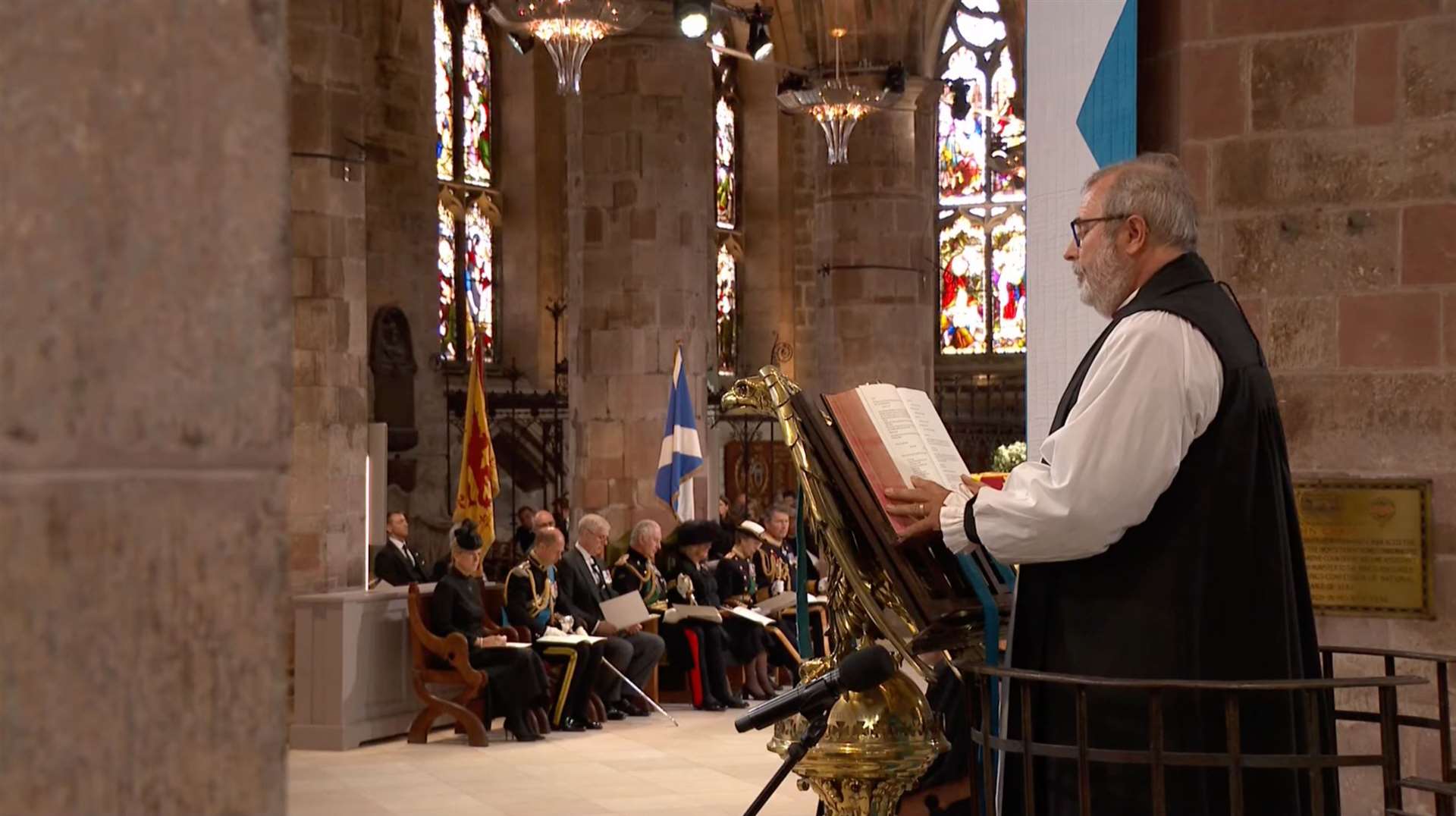Bishop Mark Strange describes ‘humbling and deeply emotional’ procession at Westminster Abbey for Queen’s funeral
Westminster Abbey #WestminsterAbbey


Bishop Mark Strange at the service of thanksgiving for the life of the Queen at St Giles’ Cathedral in Edinburgh.
As the nation bid a final farewell to Britain’s longest-reigning monarch, people across the Highlands also paused to pay poignant tribute during a national day of mourning.
Huge crowds gathered on Monday in London to witness the state funeral for the Queen during a day of pomp, ceremony and sombre emotion.
As members of the Royal family were joined by heads of state, politicians and others at Westminster Abbey, Bishop Mark Strange of Moray, Ross and Caithness – also the Primus of the Scottish Episcopal Church – was among the religious leaders who played a role in the proceedings.
He described it as “humbling and deeply emotional” to walk in the procession into the Abbey. But hundreds of miles away from the ceremonial occasion, many in the Highlands also paid their final respects as the Queen was laid to rest.
Schools, offices and other work places in communities across the region were closed for the day, due to it being marked as a bank holiday, while the streets were noticeably quieter than usual with several shops also closing their doors. Some organisations operated with reduced hours, reduced staffing levels or reduced services.
Many people watched the proceedings on TV.
Bishop Mark Strange, who lives on the Black Isle, meanwhile, travelled to London at the end of last week to take part in rehearsals ahead of the state funeral.
“The funeral service was all we have learnt to expect – ritual, splendour and sadness,” he reflected. “So many world leaders, so many people whose lives our Queen had touched.
“To walk in procession into the Abbey was humbling and deeply emotional.”
It was the second occasion since the Queen died he has played a role in official events.
Last week, he gave one of the readings during the service of thanksgiving for her life held at St Giles’ Cathedral in Edinburgh and attended by members of the royal family including King Charles III.
He was also part of the coffin procession alongside the Most Rev Leo Cushley, Roman Catholic Archbishop of St Andrews and Edinburgh.
“I was overwhelmed to receive a request to read one of the passages in the service at St Giles’, but even more overwhelmed by the crowds,” he said.
“The good will of the people standing on the Royal Mile was palpable, the questions and the offers of prayer and then the silence as the coffin arrived at the cathedral, the people of Scotland in mourning.
“The cathedral was a quiet place even with so many people inside, it wasn’t until the final moment as the coffin left on Tuesday afternoon that the silence was broken and people began to applaud as they said a final farewell to their Queen.”
Bishop Mark reflected that on the day of the Queen’s death – Thursday, September 8 – life in the country changed.
“I was putting the finishing touches to a wedding in the cathedral when it became clear that things would suddenly have to change in a way that most in this country have never experienced,” said the Bishop, who recalled his own childhood memories watching the Queen passing by his home on the outskirts of Aberdeen to Balmoral.
“In my later life as Bishop, the presence of the Queen in my life changed – royal events, invitations to Westminster Abbey and meetings at which members of the royal family were present.
“The excitement that the arrival of an invitation to a garden party or to an event at which the Queen was present brought joy to so many people.”
He felt as the news began to spread of her death, there was a sense of people not really knowing what to do.
“It is at that moment that the importance of the rituals and ceremonies we are rightly proud of in this country come into their own,” he said.
“The books of remembrance arrived, King Charles was proclaimed and all the while a slow procession through the national capital gave people a chance to pay respects.
“Each hour of each day following her death something memorable happened that allowed people to grieve and to gather and offer words of comfort to each other.”
Do you want to respond to this article? If so, click here to submit your thoughts and they may be published in print.